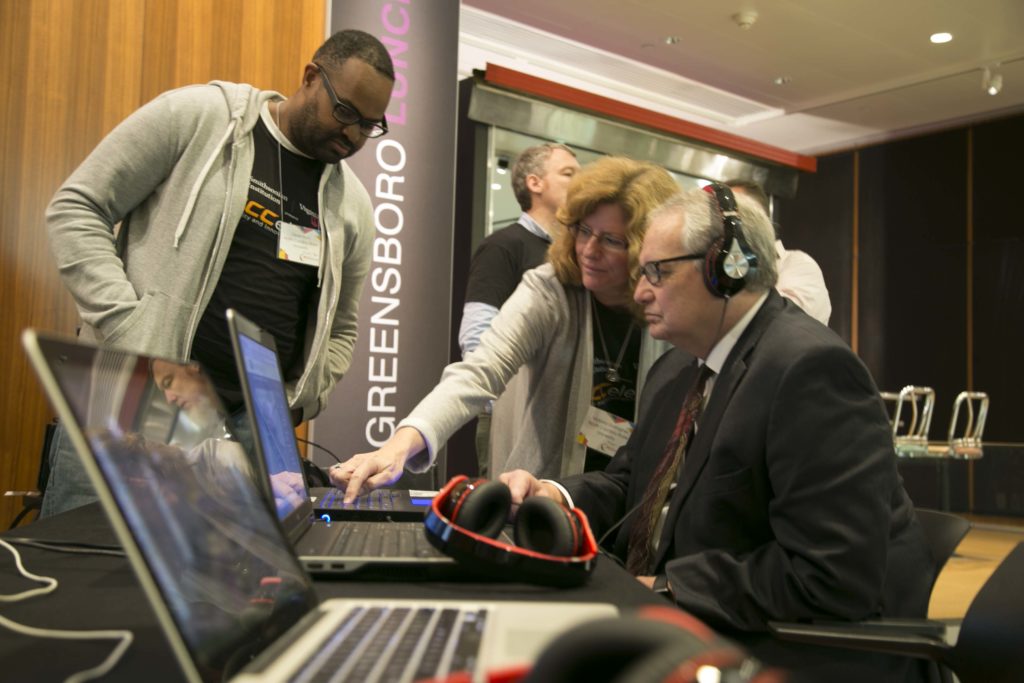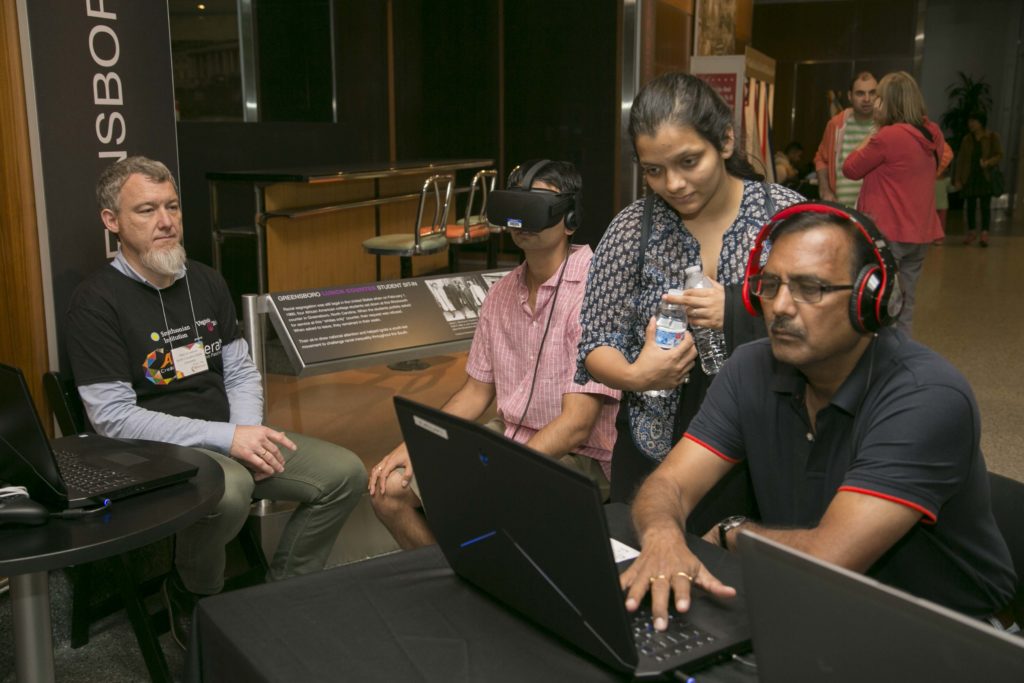Simulation
Simulation Experience
The simulation version of this experience enables viewers to move themselves around the historic sanctuary while listening to the speech using a game controller to do so.
Cite this page as: vMLK Project Team. Virtual Martin Luther King, Jr. Project. 2019. Retrieved from https://vmlk.chass.ncsu.edu/experience/simulation/
Overview of the Simulation Experience of the Speech
The Simulation experience of the Virtual Martin Luther King Project works by allowing people to experience a rendering of the original location of the speech, The White Rock Baptist Church. The White Rock Baptist Church congregation was organized in 1866, one year after slavery was abolished in the United States and the same year that the first civil rights bill was passed by the Congress of the United States. The founder of the church was Mrs. Margaret Faucette who gathered a group of friends to meet regularly to pray and sing together. The congregation celebrated its 150th anniversary on October 21, 2016. Over the course of its long and remarkable history in Durham, the church worshipped in multiple locations but the first brick building was completed in 1896. This structure, albeit renovated several times over the intervening years, was the building in which King gave his speech on the night of February 16, 1960 and serves as the basis for all of the visual depictions of the sanctuary for the vMLK project. In the late 1960s, Durham city officials decided there was a need to connect the downtown city center with the growing suburbs and determined that they would build a freeway through parts of the historically black Hayti community in Durham. The White Rock Baptist Church sanctuary was in the middle of that community and so was slated for demolition and torn down in 1967. The congregation survived and built a new sanctuary at another location in Durham in 1971. That building was renovated and enlarged to the sanctuary where, on June 8, 2014, the re-creation of King’s speech was held. As scholars have documented, the timing and negative impact of urban renewal efforts that involved building freeways through black communities in cities across the nation on the heels of the civil rights movement are truly remarkable but rarely included as a central part of historical accounts of the civil rights movement. The vMLK project recovers this history in two ways: by utilizing archival photographs to recreate the interior of the sanctuary over multiple platforms and by recovering the acoustical or sound experience of King’s speech in both the old and new sanctuary buildings of this historic congregation.


